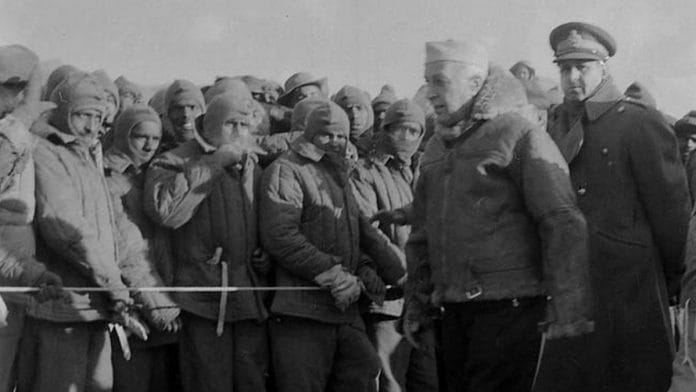Prussian general Carl von Clausewitz’s oft-quoted dictum, “war is a continuation of politics by other means”, inherently implies that there must be a political aim in taking recourse to armed conflict, when all other options, diplomatic, economic, and ideological, have failed. In modern times, this would include the sub-conventional use of force as well as proxy wars.
However, political and military aims are two distinct concepts in the context of war. The political aim refers to the ultimate goal that a state, or group of states, seeks to achieve through the use of military force. It is the ‘what’ of the war, the reason for the conflict. The military aim, in contrast, refers to the specific objectives that the armed forces would like to achieve in order to fulfill the political aim. It is the ‘how’ of the war, the means by which the armed forces will achieve the political aim.
In management principles, it is often said that a team will surprise you with their ingenuity if you tell them ‘what’ is to be done rather than ‘how’ it is to be done. This is equally true for the interplay between what is expected to be achieved at the political level and how it is to be done in the military domain.
It is important for both the military and political leaders to grasp the political aim of the war, as it forms the basis for understanding the nature of the conflict. Without a clear understanding of the political aim, it is difficult to define victory in the war, which makes it harder to win the war and bring it to a logical conclusion.
Also Read: All wars must have an ‘end’. Lessons from Bangladesh, Ukraine to Israel
How political and military aims differ
Political and military aims can differ in several ways. For example, the political aim of a war may be to achieve a certain outcome, such as establishing a new government or annexing territory. The military aim, however, may be to capture a specific city or defeat a particular enemy force. In some cases, the political aim may be more abstract, such as promoting democracy or protecting human rights, while the military aim may be more concrete, such as destroying enemy infrastructure or capturing their leaders.
Another way in which political and military aims can differ is in their scope. The political aim of a war may be broad and long term, while the military goal may be narrow and short term.
For example, in the Vietnam War, the political aim of the United States was to prevent the spread of communism in Southeast Asia. But the military aim was to defeat the North Vietnamese Army and the Viet Cong. The political aim required a sustained military effort over a longer period, while the military goal could be achieved through a series of tactical victories in the short term.
Closer home, another example is the China-India conflict of 1962. The Chinese undertook the war with the political aim of ‘teaching India a lesson’ and preventing its rise as a regional voice. In the furtherance of this, the military aim was to capture large swathes of territory, including key terrain features, and inflict casualties on Indian forces.
In general, it is important for political and military leaders to coordinate their aims and strategies to achieve the best possible outcome for their country or alliance, such as NATO. When political and military aims are congruent, the chances of success are much higher than when they are not. It may seem basic, but there are many instances when the two have not been complementary.
In Afghanistan, for example, the political aim of the US-led alliance was to dismantle al-Qaeda, remove the Taliban from power, and establish a stable and democratic government in the country. The military aim was to defeat the Taliban to enable this. The army was able to achieve its military aim of defeating the Taliban and occupying Afghanistan, but the US was unable to achieve the political goal of establishing a stable and democratic government, leading to their sudden and dramatic withdrawal. Whether either of these aims was in the national interest of the US remains questionable.
Also Read: Theaterisation isn’t duplicating units in all Services. ‘Satisficing’ has consequences in war
The test of national interest
Many times, nations have gone to war to distract from internal strife or simply to keep the incumbent dispensation in power. When faced with an external threat, nations and their populations tend to come together out of a sense of nationalism, temporarily forgetting their internal dissensions. Such distractions, though, are seldom successful, as the public is wise enough to see through subterfuge.
In our context too, we must evaluate whether the use of force in pursuit of a political aim serves the nation’s interest or is merely for mileage or expediency.
Our failure to react after the 26/11 Mumbai attacks, under the pretext of strategic restraint, weakened our image — a toothless tiger — despite our formidable military. Conversely, the surgical strike after the Uri attacks showed a new resolve to not take such provocations lying down — the tiger had bared its fangs. This operation and subsequent military actions demonstrated both our willingness and ability to use military force for political aims that were in the national interest.
This does not imply the politicisation of the armed forces, but rather underscores their role as an instrument of comprehensive national power, to be used as and when necessary. The armed forces need to be vigilant, though, that their actions are in the national interest and that they are not unwittingly doing the right thing for the wrong reasons.
General Manoj Mukund Naravane PVSM AVSM SM VSM is a retired Indian Army General who served as the 28th Chief of the Army Staff. Views are personal.
(Edited by Asavari Singh)






